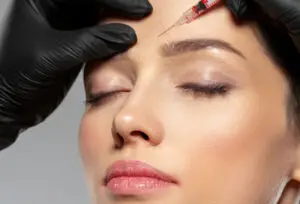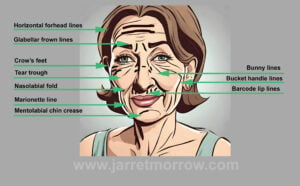As a physician, one of the common questions that I am asked from my patients is in regards to dietary factors associated with acne. So, let’s take a look at a recent meta-analysis published in the journal, Clinical Nutrition1 to find out if we can separate fact from fiction in terms of foods associated with acne risk.
Up to 90% of people will experience acne in their adolescence. In total, over 17 million people suffer from it in America alone, and adults are affected as well as teens. Acne is often associated with a variety of clinical issues, like depression and low self-esteem.
Acne and Glycemic Index?
Many patients feel that there is a link to be found between acne and their diet, but many reviews published before 2005 have failed to conclusively show a correlation. However, a revisited review in 20092showed that there is a link between acne and dairy products, along with foods that have a high GI (or Glycemic Index). However, the study could not draw conclusions between the link of acne with chocolate, salt, or other ingredients.
So, what does all of this mean for you? If you find yourself suffering from acne, it’s a good idea to look at potential factors in your diet.
Pathophysiology
Acne happens when there is inflammation and obstruction in the hair follicles. Your face and other parts of your body have hundreds of thousands of tiny hairs on them, and when accompanying pilosebaceous units are inflamed/obstructed as well, acne results.
Acne may be either noninflammatory and inflammatory and it can also involve the colonization of bacteria within the follicle. Acne is common during adolescence due to hormonal activity increasing alongside sebum production, which leads to more follicles being blocked. This leads to whiteheads and blackheads.
Dairy and Acne
Multiple studies have shown that we have begun to experience more acne in populations that shift towards a Westernized diet (with either cultural change or relocation). With the Western diet being uniquely marked by the consumption of dairy, there is believed to be a strong link between dairy consumption and acne. To put things in a different perspective. There are two non-western places where acne is non-existent–Papua New Guinea and Paraguay3. Neither the islanders of Papua New Guinea or the hunter-gathers of Paraguay consume dairy.
Why Does Dairy Cause Acne?
Components in dairy products (casein and whey protein) stimulate the production of insulin and insulin-like growth factor (IGF-1) as well as testosterone. IGF-1 and androgens like testosterone stimulate hyperplasia of sebaceous glands and leading to comedone development.
In the study mentioned at the beginning of this article1they specifically found a linear dose-response relationship between consumption of dairy, whole milk, low-fat milk, and skim milk and the development of acne. In other words, the more glasses milk you consume (skin milk appears to be the worst culprit in their study), the worse off your chances of developing acne. What’s interesting is that they found no association between consumption of cheese or yogurt with acne development.
High-Glycemic-Index Foods
High-Glycemic-Index foods are those that increase your blood sugar levels faster. Here’s a list from the Canadian Diabetes Association (link).
In short, their good to avoid in general for either those with diabetes or anyone wanting to avoid weight gain. One recent review published in the Journal of Drugs in Dermatology4suggested that there was sufficient evidence to advise patients with acne to adhere to low-glycemic diets and to avoid refined carbohydrates when possible. There’s some speculation that low-glycemic diets raise levels of sex hormone binding globulin (SHBG) thereby lowering androgen levels.
Fat and Fatty Acids
No one has published a large and well-controlled study that looks at the effects of fatty acid or fat intake in regard to the risk of acne. Omega-6 fatty acids are already known to be pro-inflammatory. The pro-inflammatory mediators found in omega-6 fatty acids are often associated with increased risk of acne. In contrast, anti-inflammatory properties can be found in omega-3 fatty acids and could lead to lower IGF-1 levels and follicle inflammation.
In general, the Western diet has a lower ratio of omega-3 fatty acids to omega-6 fatty acids when compared to the diets of more rural nations. Moreover, a diet that contains a lot of saturated fat is linked to higher IGF-1 levels while diets high in fiber and low in fat are associated with lower IGF-1 levels.
Chocolate
Mother’s have been blaming your acne on consuming chocolate since the dawn of time, I’d wager. Are they right? One recent randomized controlled trial5 found that consuming chocolate was more likely to worsen acne when compared to consuming jelly belly candy (a control with similar glycemic load). Specifically, they compared acne lesions 48 hours following consumption of either a Hershey’s 43 g chocolate bar or 15 Jelly Belly beans.
Whey Protein
Though less researched, there’s a growing body of studies published on PubMed exploring the consumption of whey protein and acne risk6. It’s possible that whey protein isolate would be a better option than whey protein concentrate due to the different composition. Alternatively, for those suffering from acne, switching to a different type of protein supplement or taking a break from supplementation altogether would be reasonable options.
Conclusion – Acne Diet
Current evidence suggests that there are known associations between your diet and the risk of acne. It’s no longer just a myth as once was believed. For those who suffer from acne, these are some tips to potentially improve your acne.
- Limit milk consumption to 1 severing per week. Consider switching to non-dairy milk as well.
- Avoid skim milk.
- For dairy, yogurt and cheese seem to be safer options.
- Avoid the consumption of chocolate and other sugary foods.
- Avoid whey protein.
Looking to improve the quality of your skin, also consider botox injections and dermal fillers.
References
- Aghasi M1, Golzarand M2, Shab-Bidar S1, Aminianfar A1, Omidian M3, Taheri F1. Dairy intake and acne development: A meta-analysis of observational studies. Clin Nutr. 2018 May 8. pii: S0261-5614(18)30166-3. doi: 10.1016/j.clnu.2018.04.015
- Spencer EH, Ferdowsian HR, Barnard ND. Diet and acne: a review of the evidence. Int J Dermatol 48(4):339-47 (2009 Apr).
- Cordain L1, Lindeberg S, Hurtado M, Hill K, Eaton SB, Brand-Miller J. Acne vulgaris: a disease of Western civilization. Arch Dermatol. 2002 Dec;138(12):1584-90.
- Mahmood SN, Bowe WP. Diet and acne update: carbohydrates emerge as the main culprit. J Drugs Dermatol. 2014 Apr;13(4):428-35.
- Delost GR1, Delost ME2, Lloyd J3. The impact of chocolate consumption on acne vulgaris in college students: A randomized crossover study. J Am Acad Dermatol. 2016 Jul;75(1):220-2. doi: 10.1016/j.jaad.2016.02.1159.
- Pontes Tde C1, Fernandes Filho GM1, Trindade Ade S1, Sobral Filho JF2. Incidence of acne vulgaris in young adult users of protein-calorie supplements in the city of João Pessoa–PB. An Bras Dermatol. 2013 Nov-Dec;88(6):907-12. doi: 10.1590/abd1806-4841.20132024.






